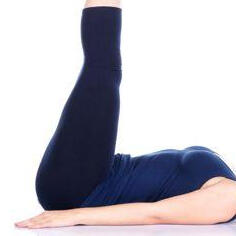
Yoga Body, Yoga Spirit: Can We Have Both?
It's understandable why John Pal highly suggests the book Yoga exercise Body: The Origins of Modern Position Yoga "for all genuine pupils of yoga." Because, Mark Singleton's thesis is a well investigated reveal of just how contemporary hatha yoga exercise, or "position technique," as he terms it in shapeshifter yoga program, has actually altered within and also after the method left India.
But the book is mainly regarding how yoga exercise changed in India itself in the last 150 years. Exactly how yoga exercise's main, modern proponents-T. Krishnamacharya and also his trainees, K. Patttabhi Jois as well as B. K. S. Iyengar-mixed their homemade hatha yoga exercise with European acrobatics.
This was how many Indian yogis dealt with modernity: Rather than continuing to be in the caves of the Himalayas, they moved to the city and accepted the approaching European social trends. They particularly accepted its even more "heavy forms of gymnastics," consisting of the prominent Swedish techniques of Ling (1766-1839).
Singleton utilizes words yoga exercise as a homonym to clarify the primary goal of his thesis. That is, he stresses that words yoga has several meanings, depending upon that utilizes the term.
This emphasis is in itself a deserving enterprise for students of every little thing yoga exercise; to understand and accept that your yoga exercise might not coincide sort of yoga as my yoga. Merely, that there are lots of paths of yoga.
In that regard, John Friend is dead-on: this is without a doubt one of the most thorough study of the society and background of the prominent yoga family tree that runs from T. Krishnamacharya's humid and also hot palace studio in Mysore to Bikram's artificially warmed studio in Hollywood.
Singleton's research study on "postural yoga exercise" composes the mass of guide. However he additionally devotes some pages to lay out the history of "conventional" yoga, from Patanjali to the Shaiva Tantrics that, based on much earlier yoga customs at shapeshifter yoga program, compiled the hatha yoga tradition between ages as well as penned the popular yoga exercise message books the Hatha Yoga exercise Pradipika and the Geranda Samhita.
It is while doing these evaluations that Singleton enters into water much hotter than a Bikram sweat. Hence I wait in providing Singleton a straight A for his otherwise exceptional argumentation.
Singleton asserts his project is only the research study of modern pose yoga exercise. If he had actually stuck to that project alone, his publication would have been great and got just accolades. But sadly, he dedicates the same error so many contemporary hatha yogis do.
All yoga exercise designs are great, these hatha yogis state. All homonyms are similarly excellent and also legitimate, they assert. Other than that homonym, which the social relativist hatha yogis view as a conceited version of yoga exercise. Why? Because its followers, the traditionalists, assert it is a deeper, extra spiritual as well as traditional from of yoga.
This type of ranking, assumes Singleton, is detrimental and also a waste of time.
Georg Feuerstein disagrees. Undoubtedly the most prolific and well-respected yoga scholar outside India today, he is one of those traditionalists that holds yoga to be an essential practice-a body, mind, spirit practice. So exactly how does Feuerstein's important yoga homonym differ from the non-integral modern posture yoga exercise homonym presented to us by Singleton?
Put simply, Feuerstein's impressive writings on yoga have actually focused on the holistic technique of yoga exercise. Overall ball of wax of methods that standard yoga exercise created over the past 5000 plus years: asanas, pranayama (breathing exercises), chakra (subtle power centers), kundalini (spiritual power), bandhas (innovative body locks), mantras, mudras (hand gestures), etc.
For this reason, while pose yoga exercise primarily concentrates on the physical body, on doing stances, essential yoga consists of both the physical and also the refined body and involves an entire variety of physical, psychological and spiritual methods seldom exercised in any one of today's modern-day yoga exercise studios.
I would certainly not have actually bothered to bring all this up had it not been for the fact that Singleton discussed Feuerstein in a vital light in his book's "Concluding Reflections." Simply put, it is purposefully crucial for Singleton to critique Feuerstein's interpretation of yoga, a type of yoga which takes place to basically coincide with my very own.
Singleton creates: "For some, such as very popular yoga exercise scholar Georg Feuerstein, the modern attraction with postural yoga exercise can only be a perversion of the genuine yoga of tradition." Then Singleton quotes Feuerstein, who writes that when yoga got to Western shores it "was progressively stripped of its spiritual positioning as well as redesigned right into physical fitness training."
Singleton after that appropriately points out that yoga had actually currently started this health and fitness adjustment in India. He additionally appropriately mentions that health and fitness yoga exercise is not apposed to any type of "spiritual" venture of yoga at shapeshifter yoga program. But that is not specifically Feuerstein's factor: he just mentions how the exercise part of contemporary yoga exercise does not have a deep "spiritual positioning." Which is an essential difference.